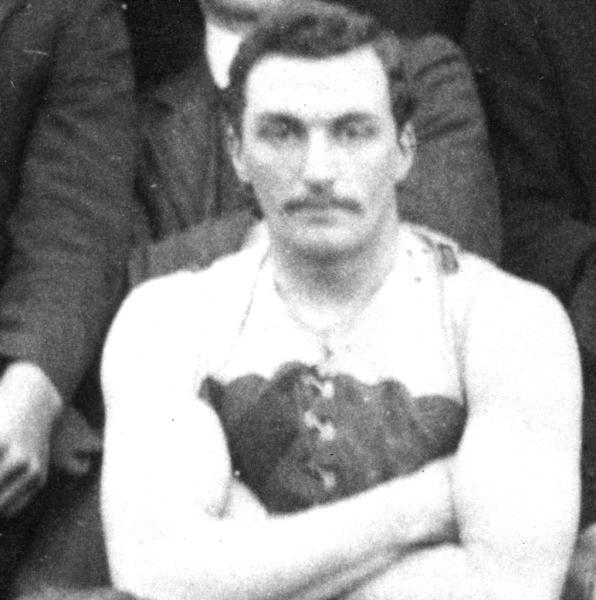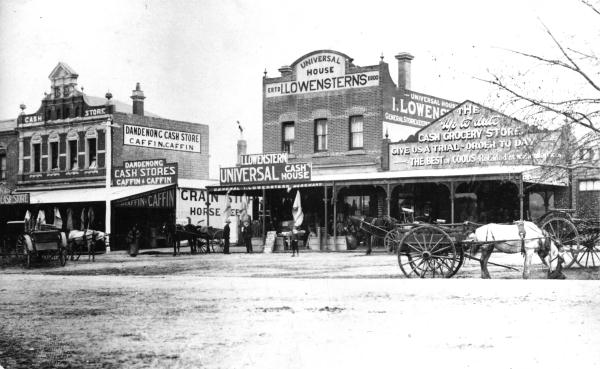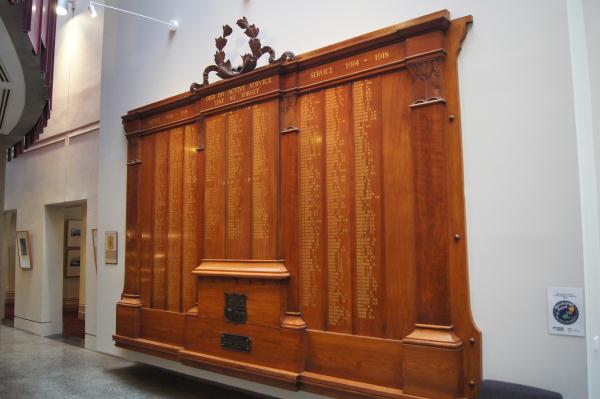
In lieu of our regular sports coverage, The Dandenong Journal this week pays homage to soldier and sportsman Otto Lowenstern. JARROD POTTER delved into the history books to showcase the achievements of one of the finest men to wear a jumper at Dandenong Football Club.
PRIDE and tenacity are inextricably linked forever to Dandenong and St Kilda footballer Otto Lowenstern.
He died in pursuit of the greater good and it was always important for him to do his part as a loyal Australian – even though he never served as an Anzac soldier.
Born in 1888 to Isaac – a general store owner who emigrated from Germany in 1895 – and Edith Angel Lowenstern – who sadly passed away at only 33 – Lowenstern was the eldest of the pair’s four children and was a half-sibling to Cyril and Gretchen from Isaac’s second wife Emily Holgate Lowenstern.
By the time Otto was 15, the 175cm-tall sports prodigy was ready to make his debut for Dandenong, in both cricket and football, with the earliest recorded match report in this newspaper’s predecessor – The South Bourke and Mornington Journal.
Lowenstern’s on-field abilities were matched by off-field interests as he was named secretary of the football club in a vote in 1906, followed up with the captaincy in 1907.
Throughout his career, he received numerous plaudits in the Journal for his tenacious attack at the ball and ability to play in all positions.
An entertaining account of Lowenstern’s toughness and skill was put forward by “Wombat” in the Burrowings column of 17 June 1908 following a bruising match between Dandenong and Ellendale.
“Two Ellendalers went after the scalp of Otto Lowenstern, because he had been so inconsiderate as to best his man every time and were giving him plenty to do when a fellow player lightened the job by projecting an arm like a telegraph pole somewhere into the region of the cue of his attacker’s lamps. Then Otto settled the argument.”
“Better for the locals were Lowenstern” among others was said of the rising-star Lowenstern in the 16 August 1905 Journal and his skills only improved throughout the years as “his ruck work and general play through the game being splendid” were highlighted in the 29 June 1910 edition.
His rise through the ranks and into reckoning for Victorian Football League selection started after a stellar year in 1909 where Dandenong Football Club won the local premiership.
Otto Lowenstern became honorary secretary pro-tempore in 1910 of the football club and held the position while vying for a place at St Kilda.
A Victorian Football League (VFL) debut for the Saints on 3 September 1910 was highlighted by a rare victory for the beleaguered Saints of yesteryear – a 12-point victory at the Junction Oval in the last game of the home-and-away season.
Otto’s last recorded football match was a 6.8 (44) to 15.11 (101) loss to Collingwood on 2 September 1911, playing alongside early VFL legends Roy Cazaly and Harry Lever. Lowenstern would kick his one and only VFL goal in that match at the Junction Oval to finish his VFL career with 12 matches and two wins.
Pride and honour remained important to Lowenstern even as war drew closer and infringed on a holiday he was undertaking after 28 September 1911 to America and Canada.
From his tour of America, including a rough-and-tumble New York sojourn, Lowenstern headed to Vancouver in 1912 and went to war in 1914.
Otto wanted to keep up his end as a good Australian and chose to enlist with Lord Strathcona’s Horse (Royal Canadians) and the 72nd Highlanders in Vancouver as World War I loomed.
In his last public correspondence recorded in the Journal on 4 April 1912 – Mr Lowenstern winds up his letter with the announcement that he has joined ‘the’72nd Highlanders, so if war breaks out he will be ‘doing a bit for his country’.
After three years in active service, throughout the Western Front, Sergeant Lowenstern died on 1 December 1917 – defending Gouzeaucourt six days before his 29th birthday – in a battle between the First Canadian Expeditionary Forces against German Empire.
English novelist Rudyard Kipling described the attacks in and around Gouzeaucourt across the last week over November from the British Empire perspective in his compilation of letters and diaries “The Irish Guards in the Great War”.
“Over the ridge between Gouzeaucourt and Metz poured gunners, carrying their sights with them, engineers, horses and infantry, all apparently bent on getting into the village where they would be a better target for artillery,” Kipling said.
“The village choked; the Battalion fell in, clear of the confusion, where it best could, and set off at once in artillery formation, regardless of the stragglers, into the high and bare lands round Gouzeaucourt.”
Once news returned across the oceans early in 1918, the last mentions of Otto Lowenstern in the Journal among other papers were eloquent, tragic and summed up the man as a gentleman among all. He left no family or wife behind and his legacy remains only in tattering books and fleeting VFL records.
Lowenstern’s legacy deserves to live on and fans of Dandenong, St Kilda and passionate Australians in general should stop to reflect and admire the men who chose to risk their lives to protect the liberties of their beloved country.








